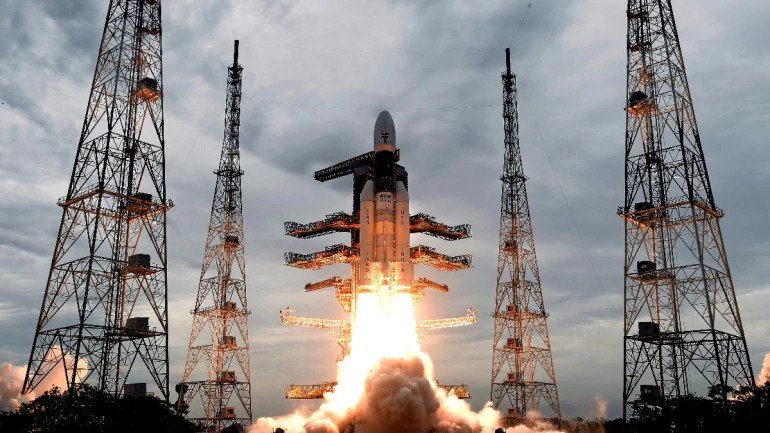Indian Space Research Organisation (ISRO) achieved a major milestone as the Chandrayaan-2 enters Moon’s orbit in the wee hours of Tuesday (20th August). According to the statement made by ISRO ‘Lunar Orbit Insertion (LOI) manoeuvre was completed successfully today (August 20, 2019) at 0902 hours IST as planned, using the onboard propulsion system. The duration of manoeuvre was 1738 seconds (around 29 minutes). With this, Chandrayaan-2 was successfully inserted into a Lunar orbit. The orbit achieved is 114 km x 18072 km’.

Now, a series of orbital manoeuvre will be undertaken by the Chandrayaan-2 spacecraft to enter the final orbit as it will pass over ‘Lunar Poles’ at a mere distance of 100 kilometres from the surface of the Moon.
The lander will detached from the Orbiter and enter into 100 kilometres X 20 kilometres Orbit close to the moon.
The lander will execute multiple complex braking manoeuvre so that it does a soft landing in the South Pole region of the Moon. ISRO said Lander will land on the 7th September. As of now, the next Orbit manoeuvre is scheduled between 1230 and 1330 hours IST on Wednesday as per ISRO.
Just days away from successfully landing on the surface of the Moon with Chandrayaan-2, ISRO will get a seat amongst the most prestige Space Agencies of the globe like NASA (US), Roscosmos (Russia), and CNSA (China) who also have successfully landed on the lunar surface.
The project only costed India around Rs. 978 crores, which is by far the cheapest when compared to other global agencies. In the Project, institutions from around the country participated to help make it a successful project.
K Sivan, Chairperson ISRO said, ‘Nearly 500 universities and 120 industries have played a role in GSLV MkIII and Chandrayaan-2 respectively. And, 80% and 60% of the cost has gone to these’.
Reaching Moon’s orbit is just one part of the project, as ISRO has already done that with its previous Chandrayaan-1 mission in 2008, the more critical part of this mission (Chandrayaan-2) is to make the Lander ‘Vikram’ successfully land on the surface of the Moon.
Now that LOI (Lunar Orbit Insertion) has been achieved, ISRO is going to undertake 4 more manoeuvres (dated: August 21, August 28, August 30, and September 1) to bring the spacecraft closer to the Moon. ISRO plans to keep it at the orbit of 100 kilometres X 100 kilometres for the rest of its life.

After the final manoeuvre of the Chandrayaan-2 on the 1st of September, the next day lander will be separated from it. ISRO said ‘Vikram (Lander) will separate from the orbiter on September 02. Two orbit maneuvers will be performed on the lander before the initiation of powered descent to make a soft landing on the lunar surface on September 07’.
ISRO Chairperson K Sivan added ‘The final descent of the lander will be 15 terrifying minutes for us, as it is something we’ve never tried before. It is one of the most complex operations we’ve ever handled
In total the Chandrayaan-2 is carrying 14 payloads, 13 of them belongs to India and 1 payload is of NASA which will focus on mapping the craters on the polar region of the moon, in addition, this payload will also check for water.
The rover payload (Pragyaan) will check for the mineralogical compositions (elements components) on the Moon’s surface, additionally determine the composition of both the lunar soil and rocks. The instruments on the lander (Vikram) will measure both thermal properties and seismicity in addition to several other information it will collect.
ISRO said, Chandrayaan-2 will carry India’s legacy of the success of the first lunar mission, and MOM (Mars Orbiter Mission).
Sivan said ‘The mission is mainly to make use of space tech to help the common man lead a better life and to ensure safety, security and quality. Cyclone predictions, broadband to rural India et al are just examples of how the common man is linked with space tech. But along with this we are also looking at space science’.
He added ‘Even Vikram Sarabhai was faced with a question of why space when farmers are struggling. Today you may ask why we need to explore planets and satellites when we have other objectives, but let me assure you that these are crucial’.


